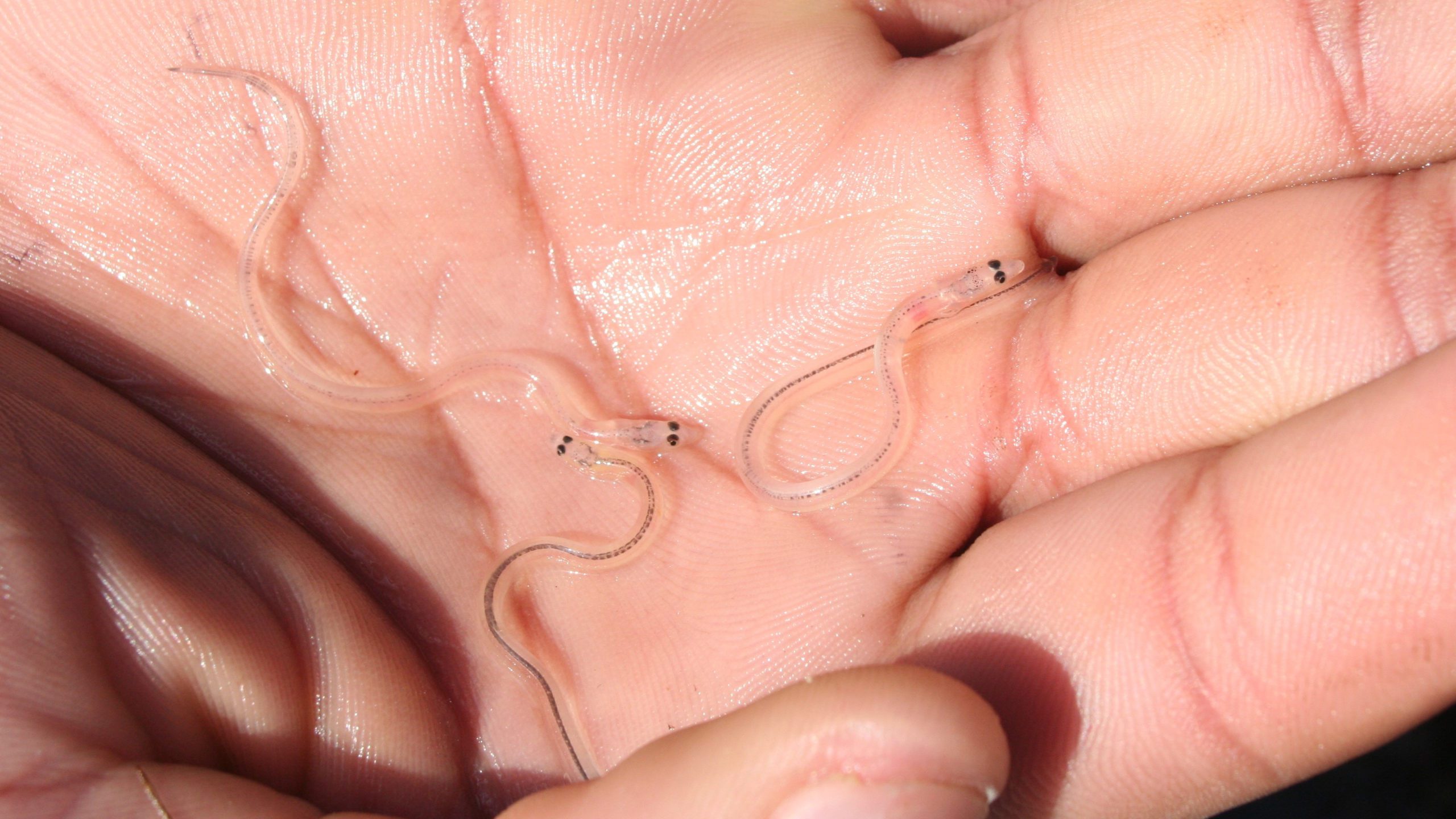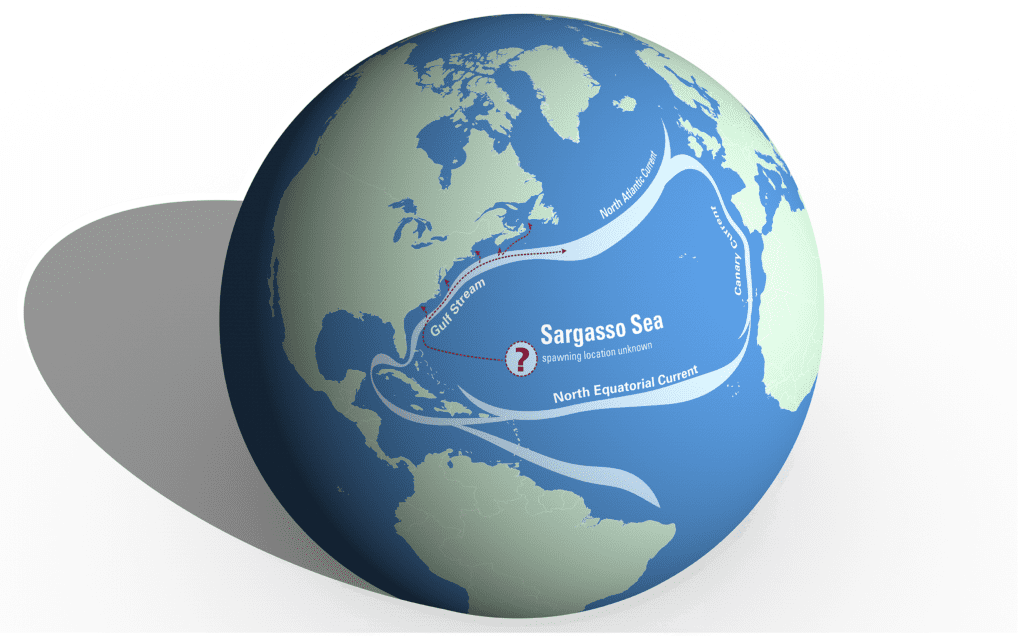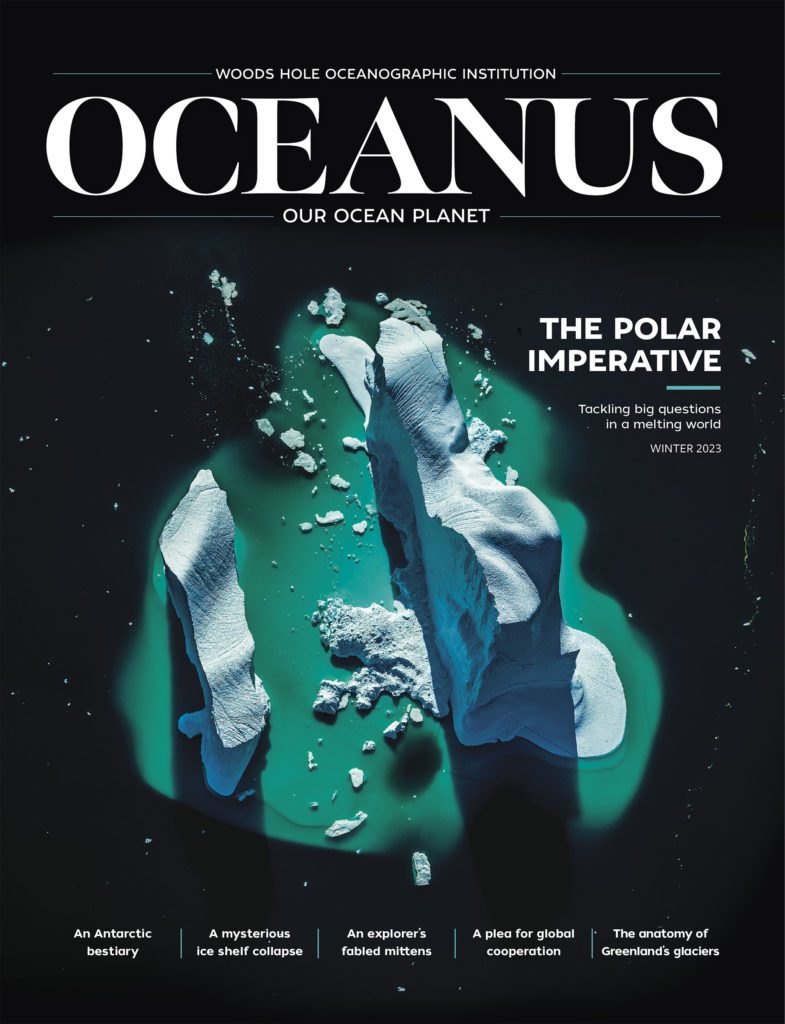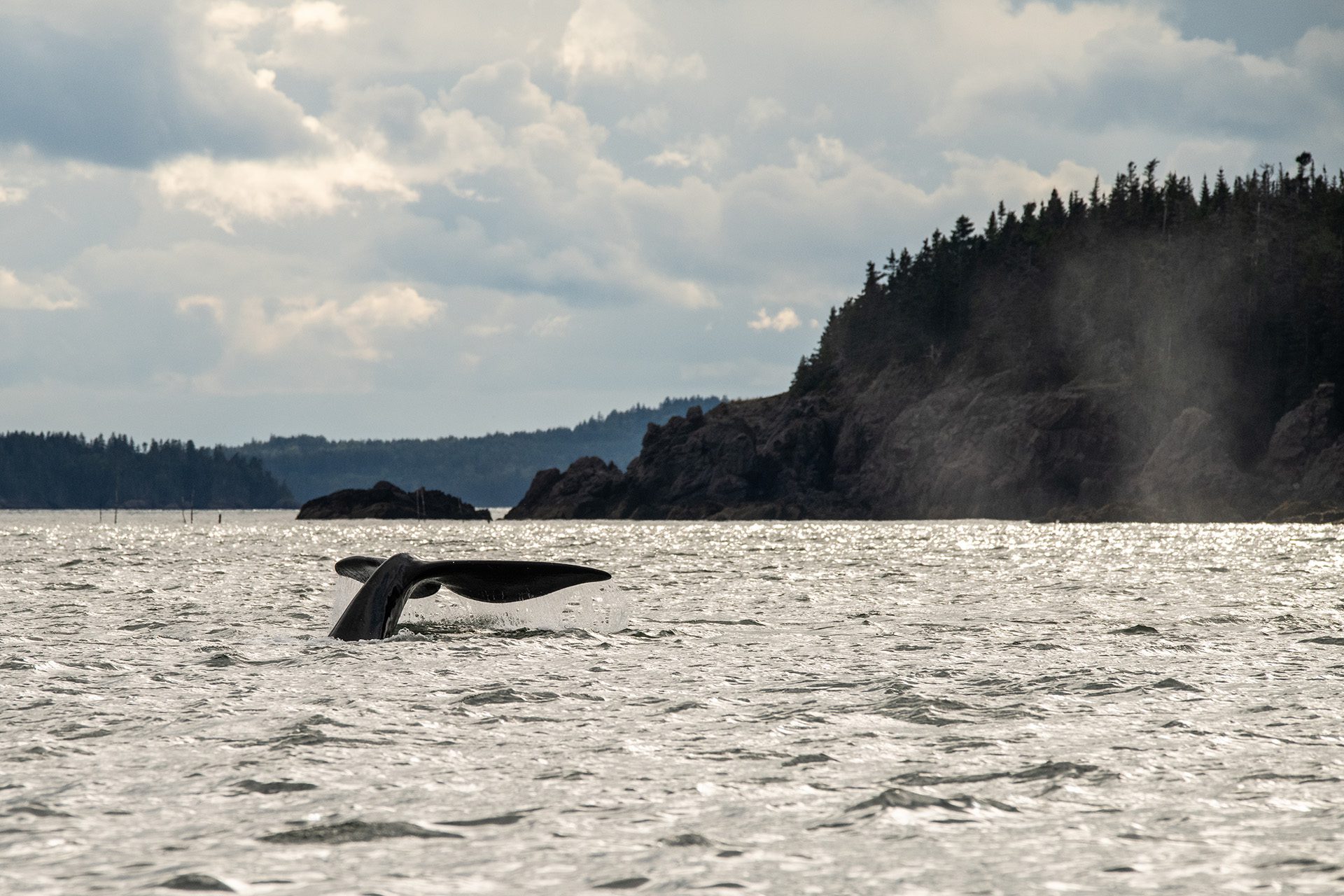
Making sense of a mystery fish
Scientists tackle long-standing questions about the elusive American eel
Estimated reading time: 6 minutes
In her book, Under the Sea-Wind, Rachel Carson described how the American eel makes its journey from the rivers of New England, borne along by the forces of current, gravity, and instinct, to the wave-battered coast and out to sea. At the end of this account, she wrote, “And as they passed through surf and out to sea, so also they passed from human sight and almost from human knowledge.”
In the more than 80 years since Carson’s book, human knowledge has only inched slightly forward in its understanding of the American eel. But that doesn’t mean scientists aren’t trying to crack the seeming unknowability of the American eel.
Irina Rypina, a WHOI physical oceanographer, is one of them. Using simulated models of the ocean and many of its features—currents and weather, salinity and temperature gradients—she is trying to solve some of the eels many mysteries. In particular, she has reverse-engineered how eels get from the Sargasso Sea back to the American coast, a difficult journey for anyone, let alone a centimeter-long larval eel.
Scientists around the U.S. and the world have triangulated to unlock the eel’s secrets, by studying such things as the effects of dams on their migration efforts; how their body length and personality might affect their ability to migrate downriver; how they are dealing with changing oceans or recreational fishing; implanting micro-acoustic tags and more.
For those who think that all these studies might not be necessary, since there are facts about the American eel long settled by science, there aren’t. Not really. Scientists do know that mature eels travel from American rivers on the East Coast to spawn. But how do the eels know when they’re ready to go?
When they do spawn, no one knows exactly where they go. It could be the Sargasso Sea, yet no one has ever seen eels breeding there, caught adult eels there, nor found eel eggs nor sperm. All they have caught in and around the Sargasso Sea are very small eel larvae, or leptocephali.
And why the Sargasso Sea? Rypina said that it’s possible that this has always been the spawning area for eels, but when the continents were closer together, it wasn’t too far from land. As the continents have moved apart gradually over millions of years, the eels keep returning, despite the many miles added to the journey.

Scientists think that American eels spawn somewhere in the southwest corner of the Sargasso Sea, which is surrounded by circulating ocean currents. The eels migrate as tiny larvae to fresh waters along the coast, where they spend their adult lives. Where the adults spawn and how the larvae migrate to the coast both remain mysteries. (Illustration by Eric S. Taylor, Woods Hole Oceanographic Institution)
Even though we do know that glass eels (glass is the term used for an eel between its larval and elver stage, before it has metamorphosed into a freshwater fish) end up in the Gulf of Maine and elsewhere on the East Coast of the United States, scientists still aren’t sure exactly how they get there: do they swim, or just float? Do they navigate in and out of the strong currents like the Gulf Stream? If so, how? When and why do they turn from larvae into glass eels?
The glass eel fishery is famously lucrative: a pound of glass eel sells for about $2,200, and only a small number of people can get a license to catch them. Only two states—Maine and South Carolina—have a commercial glass eel fishery. Most of the catch is sent to Asia, where the fish are raised to adulthood and then sold as food.
After reading an article about glass eels in the Gulf of Maine, Rypina said, she was left with more questions about the eels’ journey across thousands of miles of ocean: How would these glass eels even get to the Gulf of Maine—do they spawn in the middle of the Sargasso Sea, which is a subtropical gyre, and then have to cross all of these currents and travel this long distance and end up in coastal ecosystems? It was baffling.
James McCleave, a marine scientist at the University of Maine who has spent his career researching eels, said that he hoped early in his career that “in this century we might be able to define the spawning areas a little bit better by where we find the smallest larvae.”
That has so far proved elusive, he said: “A few people have tried, including us unsuccessfully, to catch adults in the Sargasso.”
But even if we can’t catch them, there are some things we do know, McCleave and Rypina both said. During the larval phase, which lasts about a year, the larvae go up and down in the water column, likely to avoid predators. During the day, they dive down to around 200 meters (more than 650 feet), and come up closer to the surface – about 50 meters (roughly 165 feet) deep – at night. But in addition to this vertical migration, they also have to move laterally. “Do they navigate during that journey, or do they just hitch a ride in the Gulf Stream without swimming?” Rypina said.
McCleave thinks there’s a possibility that the eels hit the bottom when they reach shallow water, which signals to them that it’s time to change course.
Rypina created a model to look for an answer: Merging together knowledge of currents and eel larvae—the vertical migration, possible maximum swimming speeds, and a few other variables—she released her simulated larvae into the computerized Gulf Stream to see where they would end up after a year if they didn’t swim at all and only drifted.
Without any navigation or swimming, “They would never end up in the Gulf of Maine in a year,” she said.
This also revealed that the larvae must somehow swim directionally, which opened up other questions, she said, such as: how do they do that?
Do they sense temperature and salinity gradients? Possibly, but basin scale gradients of these factors are hundreds of kilometers wide. If they used these gradients as signposts, they would have to remember the temperature and salinity from days or weeks earlier, which “doesn’t sound very probable,” she said. Perhaps they navigate by noise, some have suggested, or by the position of the stars, given how close they get to the surface.
More likely, Rypina and McCleave agreed, is that they navigate by sensing the earth’s magnetic field, which adult eels and other larval fish can do.
Another outstanding question is how climate change might affect eel migration. "Warming waters might increase the growth rate of the larvae and then maybe affect when and where they transform into elvers that can enter our freshwaters,” said McCleave. Models like Rypina’s might help show us what the consequences for eels would be.

Irina Rypina. (Photo by Daniel Hentz, © Woods Hole Oceanographic Institution)
As for the Gulf of Maine, he said, we know it’s warming “at a faster rate than the ocean as a whole, and so I don’t know how or why, but that could certainly affect the abundance of elvers that make it into the Gulf of Maine rivers and Atlantic Canada,” he said.
Ultimately, “something is going to change” because of warmer, more acidic oceans, he said. “On the other hand, I think of eels in general as being pretty adaptive evolutionarily,” he added. “There is enough genetic plasticity that they can survive in a variety of habitats.”
With climate change, there are so many unknowns. When it comes to eels, though, that will be nothing new for the scientists who try to make sense of their mysteries, which McCleave said are “humbling in a good way.”
“One kind of naive thought is maybe there are some things that should just remain unexplained with our current knowledge, anyway,” he said, with a laugh.



